|
The 58mm focal length is inextricably tied to the introduction of the 35mm SLR in the mid-1930s. This was due entirely to the physical difference in construction required by the mirror (the "reflex" part of the Single Lens Reflex designation) used for viewing the subject directly through the lens versus the then-standard rangefinder design. Because of the greater depth including the mirror in the optical path required, this entailed more distance between the rear of the mounted lens and the film plane, which is termed "back focus". The longer back focus of the SLR meant that the standard 50mm focal length rangefinder lenses of the day could not bring the rear focus node to the proper distance from the film plane if simply converted to the SLR mount (in this case, the Kine Exakta of 1936). By the mid-1960s, 50mm would become the standard for SLR lenses as optical designers were able to gradually overcome the design challenges presented by the SLR. In the meantime, the easiest way to overcome the back focus issue was to simply bump the focal length a bit to accommodate the extra back focus. And that is what Willy Merte of Zeiss did in developing the famous 58mm f/2 Biotar, released in 1938. The Biotar would set the bar for standard SLR lenses for the next 25 years, famously duplicated in the Helios 44-2, among others. Most manufacturers of SLR lenses followed Merte's lead by producing 55 to 58mm lenses, particularly for faster-than-f/2 maximum apertures. Minolta was no exception, and would, in fact, be the last holdout among the Japanese manufacturers when it came to adopting 50mm as its normal lens focal length. They introduced their fast 58/1.4 only three years after their first SLR, the SR-2, and supplemented it with a 58/1.2 seven years later. The 58/1.4 would remain in production until 1973, and the 58/1.2 until 1978, with both being replaced by 50mm lenses, accordingly. This is their story. A History of the 58/1.4 Rokkor-PF The 58/1.4 debuted in 1961, in Auto Rokkor form. "Auto" here referring to the automatic stop-down and re-opening of the lens aperture at the start and finish of exposure, as long as the SLR body used supported that feature. The 58/1.4 remained the fastest Minolta lens in production for seven years, until the f/1.2 came along. You may have noticed the "PF" suffix following Rokkor: this two letter code denoted the number of groups and elements making up the optical formula for a given lens. Minolta used this nomenclature until 1975 or so, when it was gradually eliminated as various late-MC Rokkor(-X) lenses were updated. With the introduction of the MD Rokkors in 1977, the letter codes disappeared for good. The first letter stood for the number of groups and was taken from the Greek or Latin word for numbers three through nine. Here it is in chart form:
The second letter denoted the overall number of elements and simply followed the Western alphabet:
So, our 58/1.4 Rokkor-PF gives us five groups (P=pente) and six elements (F=6). As we will go on to see, having a fast f/1.4 aperture with only a six-element construction was unique and placed some constraints upon performance, particularly at wider apertures. The 58/1.4 would prove to be a very popular lens for Minolta and was in production for a dozen years and through four generations:
These designations are according to Dennis Lohmann's excellent Minolta lens index and website. At the bottom of the lens index, Dennis goes into detail describing the mechanical and cosmetic changes from each generation to the next. All succeeding generations are backwards compatible with previous ones. Many internal improvements were made over time such as: coatings, internal blackening, and matte finish on the aperture blades. Also, with the introduction of the final MC II generation in 1969, Minolta tweaked the optics of the 58/1.4 with the assistance of their first lens computer. The MC II is most easily distinguished by its "hill and valley" ("Berg und tal" in German) focus ring grip, versus the previous "flat" grip used in the prior MC I and Auto Rokkors. The MC II also got the latest in Minolta's Achromatic coatings (which were constantly being improved, even mid-generation), making it the pick of the litter among the 58/1.4s. It would be replaced in 1973 by the MC Rokkor(-X) 50/1.4 PG (but that's another tale for another day :-)). The Debut of the 58/1.2 MC Rokkor-PG August 1, 1968 saw the announcement to dealers in North America of Minolta's first f/1.2 SLR optic, with the new, 7-elements in 5-groups PG-coded, MC Rokkor. Five of those elements were made of newly-developed, high-index glass to reduce both spherical and chromatic aberration as well as coma. Incidentally, Minolta also introduced its original 100/2.5 MC Rokkor-PF simultaneously. Initially only offered in a kit with the SRT-101 at a $360 USD premium over the same kit with the 58/1.4 (all prices inflation-adjusted to 2024), the 58/1.2 would live for a decade in Minolta's lineup across three generations (MC I, MC II, and MC-X) until it was replaced by the 50/1.2 MD Rokkor in mid-1978. It made the most of those ten years, arguably becoming the most renowned Rokkor lens in history. A good portion of early production of the 58/1.2 made use of a thoriated rear element (radioactive thorium was added to the glass) for improved optical performance, but this was later replaced by lanthanum (lanthanum is 1/10,000th as radioactive as thorium). It is difficult to be conclusive with serial numbers without access to original records, and the fact is that lenses were made in batches in which the serial numbers were not purely sequential. Thus, it can be safely stated that only the rubber-grip MC-X lenses are positively known to NOT be radioactive, whatsoever. Many MC II lenses will also not be radioactive, but some will be. If you see the tell-tale brownish patch in the middle of the rear element on a 58/1.2, that is a dead giveaway that it has thorium in it. People often mistake yellow reflections from the coatings of the front or rear of the lens for signs of thorium. That is not the way it manifests itself. The brownish patch is most concentrated in the center of the element and fades off toward the edges. The radioactive 58/1.2 Rokkors are not at the same level as the Canon FD 55/1.2 AL (commonly noted to be the highest emitter among vintage Japanese SLR lenses) when it comes to emissions, so it is a matter of personal preference whether to avoid them altogether or to UV treat the rear element to allow for full light transmission and optical performance. Comparing Our 58mm Minolta Duo A very common question posed when people are considering the 58mm Rokkors is this: Is the f/1.4 a poor man's f/1.2? In a word...no. And the reason is simple: a maximum aperture of f/1.4 is really pushing the limits (and actually exceeding them, in my personal opinion) of a six-element Double Gauss construction. 6e/5g layouts for normal lenses with maximum apertures from f/1.7 to f/2 were super common up until the 2010s, because performance at those moderate figures was pretty decent, even if not mind-blowing. Squeezing another half stop out of that configuration was a bridge too far. Minolta tacitly admitted as much, when they replaced the 58/1.4 in early-1973 with the 50/1.4 MC Rokkor-PG (7e/5g), which drew far more from the 58/1.2's optical design than the outgoing 58/1.4's. Now it's important to place this in context: from f/4 and upward, you will see very little to zero difference between a 6e/5g and a 7e/5g Double Gauss design. The main differences will be seen from f/2 to f/2.8, and that is where the 58/1.2 is superior to the 58/1.4 in virtually every category. Does that make the 58/1.4 a dog? Not at all! It just means you need to be aware of its limitations at those apertures and determine if it will actually meet your needs there or not. A very important important point to bear in mind, with both of these lenses, is that they were developed and produced in an era when max. aperture was viewed as a last resort when there was no other way of getting a usable image. Low contrast (a result of veiling flare), heavy vignetting, spherical aberration, coma, field curvature, and considerable longitudinal chromatic aberration were all noticeable wide-open with this generation of fast lenses. The 58/1.2 is famed for its bokeh, but wide-open it is busy, swirly (for many, this is a highly-desirable trait :-)), and it has severe cat's-eye (mechanical vignetting) towards the corners (also a feature of its contemporary competitors). Optimal smoothness of the bokeh is found from f/2 to f/2.8, also abetted by the 8-blade aperture, which keeps OOF highlights rounder than the standard 6-blade aperture of the 58/1.4. So the question to ask yourself really should be: What am I going to primarily be using this focal length for? Portraits; landscapes; general use? Will my needs truly be met by a lens that costs 5 to 6 times as much as the other, and which weighs 65% more (275g/9.7 oz vs. 455g/16 oz for the MC II versions)? Even though it works just fine at smaller apertures, the whole point of the 58/1.2 is to use it at wider apertures below f/4. If that is not where you are going to primarily use it, what really is the point (besides it looking and feeling stinkin' cool, with that monstrous front element ;-))? A downside of that huge front element sticking way out there? It flares prodigiously, and a hood is mandatory if you want any semblance of contrast remaining in images in bright light (that's also a good idea for the 58/1.4, by the way). The 58/1.2 Rokkor is no contre-jour lens, whatsoever :-). The 58/1.4 was originally developed for B&W and it shows, results are beautiful. One major goal of the 1969 re-design was to improve performance with color film, another reason why the MC II remains my pick for the 58/1.4. Comparing the 58/1.2 Rokkor to Other f/1.2s of the Era Another comparison often posited is: How does the f/1.2 Rokkor stand up to...say, the 58/1.2 NOCT Nikkor? On the surface this seems like a logical comparison: both are 58mm, have a max. aperture of f/1.2., and sport 7-element optical layouts. So why not see if the Rokkor can compete with the Nikkor, particularly at 1/8 to 1/10 of the cost? Or what about the Canon FD 55/1.2 AL (aspherical) which is currently priced similarly to the NOCT? Well, the key lies in that word "aspherical". Both the Nikkor and the Canon made use of hand-ground aspherical elements (the front element in the Nikkor, and the second element from the front in the Canon) to further improve performance, specifically, to minimize coma flare and spherical aberration. And they both handily surpassed the Minolta in that regard. Canon also added another element (8e/6g), and a floating-element configuration to the AL to further improve performance at close-focusing distances along with a healthy dollop of thoriated-glass to top it all off. So, there are considerable differences in construction and optical materials between these lenses. Thus, both the Nikkor and the Canon originally cost three to four times the amount of the Rokkor. Perhaps more realistic comparisons for the Minolta 58/1.2 are: the 55/1.2 Nikkor, the standard, non-aspherical Canon FL/FD 55/1.2 & earlier FL 58/1.2, and the Olympus OM Zuiko 55/1.2. All of these lenses feature similar 7-element construction without the benefit of aspherics or floating elements and were developed from the mid-1960s to the early-'70s. Including similar optical capabilities and limitations, this class of f/1.2s tend to show similar characteristics wide-open, from f/2-2.8, then f/4-8, and finally f/11-16. Of course, each has its unique facets, as each manufacturer optimized aberration correction to meet their own criteria, but they all do share the overall theme of quite distinct changes as you move through the aperture range, making for a good deal of versatility and the ability to tailor the lens to the type of effect you want in an image. Most share the Rokkor's undercorrected spherical aberration at close distances, which is a primary ingredient in bokehliciousness. Life with 58mm Rokkors There is a lot to like about Minolta's dynamic duo of 58s. Personally, I love the little focal length boost over standard 50s, especially for couples' portraits. I got my best image of my parents with the 58/1.2. My late-MC II 58/1.4 makes a great walkaround, general purpose lens, and it just feels right mounted on an SR-T. You can instantly see and feel why Minolta sold a boatload of SRT-101/58/1.4 kits over the years. The MC II and MC-X generations of Rokkors are the pinnacle of Minolta build quality, in my opinion. The machining of the knurling on the MC II focus and aperture rings is beautiful. The damping of their aluminum-on-brass focus helicoids equals anything else (Leitz, Zeiss, Takumars, etc.) and can make even the finest Nikkor feel just a touch self-conscious ;-). They offer a tremendous amount of quality for the dollar. The 58/1.2 is a serious handful of vintage lens (especially, when mounted on an XD or later compact Minolta body), but is positively petite compared to many modern f/1.4 and f/1.2 lenses. As noted earlier, using lens hoods (they don't have to be OEM, even a simple aftermarket rubber hood is fine) allows you to get the most out of them. Both used Minolta's then-standard 55mm filter thread, meaning filters and other accessories are numerous and inexpensive. This brace of 58s rewards familiarity as they make noticeable changes with each stop of aperture up to around f/8. The 58/1.2 can get you a touch of that swirly Biotar/Helios bokeh wide-open, before turning into the cream-machine at f/2-2.8. The MC II 58/1.4 is a noticeable step up from older versions, wide-open, but is still admittedly low on contrast, and has quite a bit veiling flare and chromatic aberration at f/1.4. Tickling it down to f/2 makes a difference, but f/2.8 is really where it begins to improve, and that's usually as low as I will go on aperture with it. The 58/1.4 is right in line with Minolta's later 50/1.4s as far as current cost is concerned, sitting between $75-100 USD depending on condition. The 58/1.2 runs anywhere from $400-600 USD, again depending on condition, which is a greater disparity than when both lenses sold new. Such is the result of acquiring that reputation as a bokeh-monster. Whether that is worth it will be entirely up to you :-). Rokk-or on! References: Minolta SR System by Dennis Lohmann @ https://minolta.eazypix.de Various Brochures & Other Literature @ https://www.pacificrimcamera.com Tale No. 16 - AI Noct Nikkor 58mm F1.2 @ https://imaging.nikon.com Tale No. 49 - Nikkor-S Auto 55mm F1.2 @ https://imaging.nikon.com Lens Hall - FD Lenses @ https://global.canon/en/c-museum/lens.html?s=fd
4 Comments
Gil Aegerter
4/23/2024 11:51:39 pm
Another great look at some classics. I have a couple 58mm f1.4 lenses. If I had to have the absolute sharpest images, I'd opt instead for the 50mm f1.4, but the experience of the 58mm on an SRT body is just wonderful.
Reply
C.J. Odenbach
4/24/2024 12:16:12 am
Agreed on all counts, Gil. Nice to hear from you :-).
Reply
Grant Goodes
4/24/2024 02:25:58 pm
Even though I'm a dedicated Nikon shooter, this was a very interesting article for me. I'm old enough to remember the fast Nikkor "normal" lenses being 55mm or 58mm, but my kit in those days was 24mm+105mm. However, when I started to get more serious about investing in my equipment, I lucked upon a juicy, mint-condition AiS Noct 58/1.2 (this was just before the lens was discontinued). I thought the price was extortionate, but my Wife sneakily bought it as a Christmas present, and am I glad she did because just after I bought it the prices for the lens doubled & tripled.
Reply
C.J. Odenbach
4/25/2024 01:09:22 am
Thanks for the great comet story, Grant. Glad you enjoyed the article.
Reply
Your comment will be posted after it is approved.
Leave a Reply. |
C.J. OdenbachSuffers from a quarter-century and counting film and manual focus SLR addiction. Has recently expanded into 1980's AF point and shoots, and (gack!) '90s SLRs. He even mixes in some digital. Definitely a sick man. Categories
All
Archives
March 2024
|
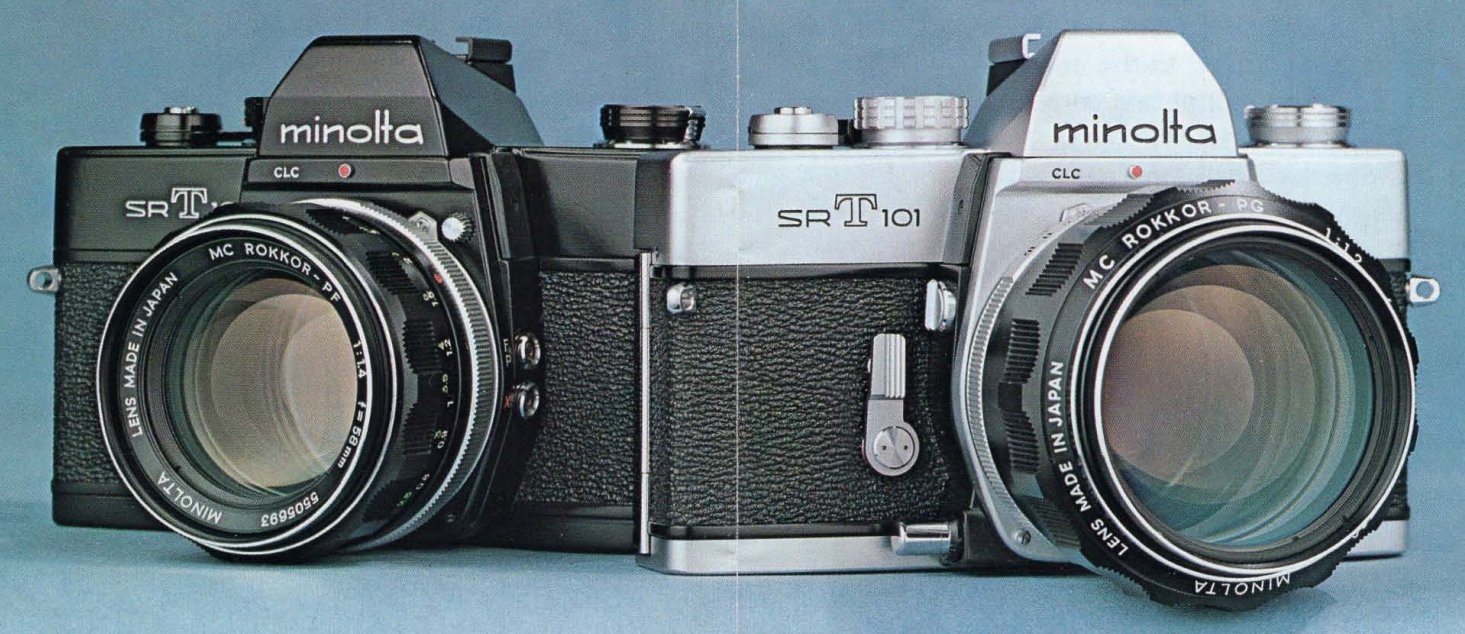
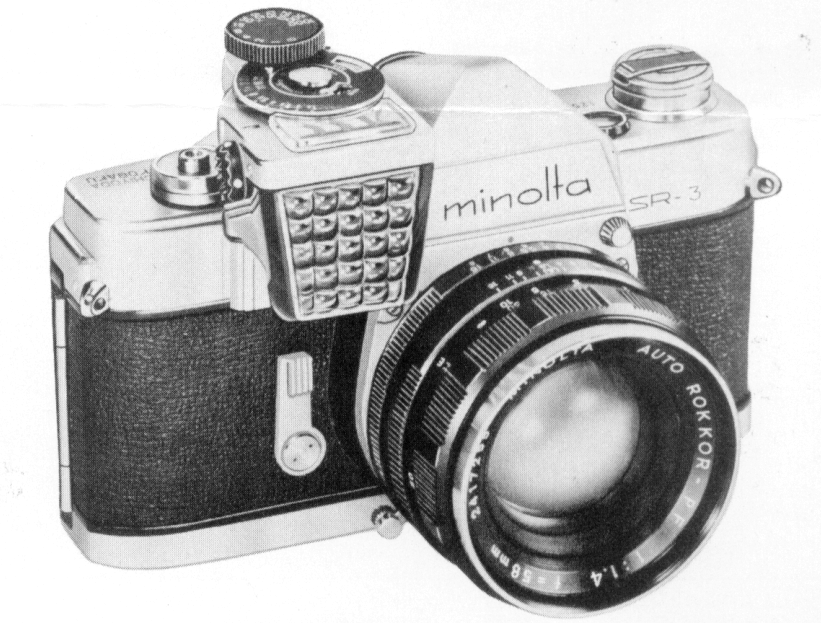
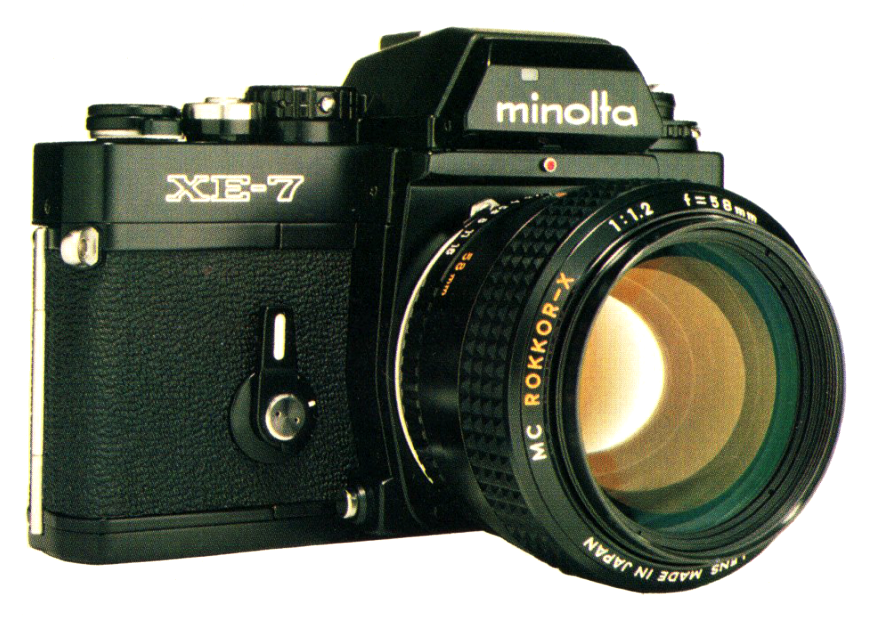
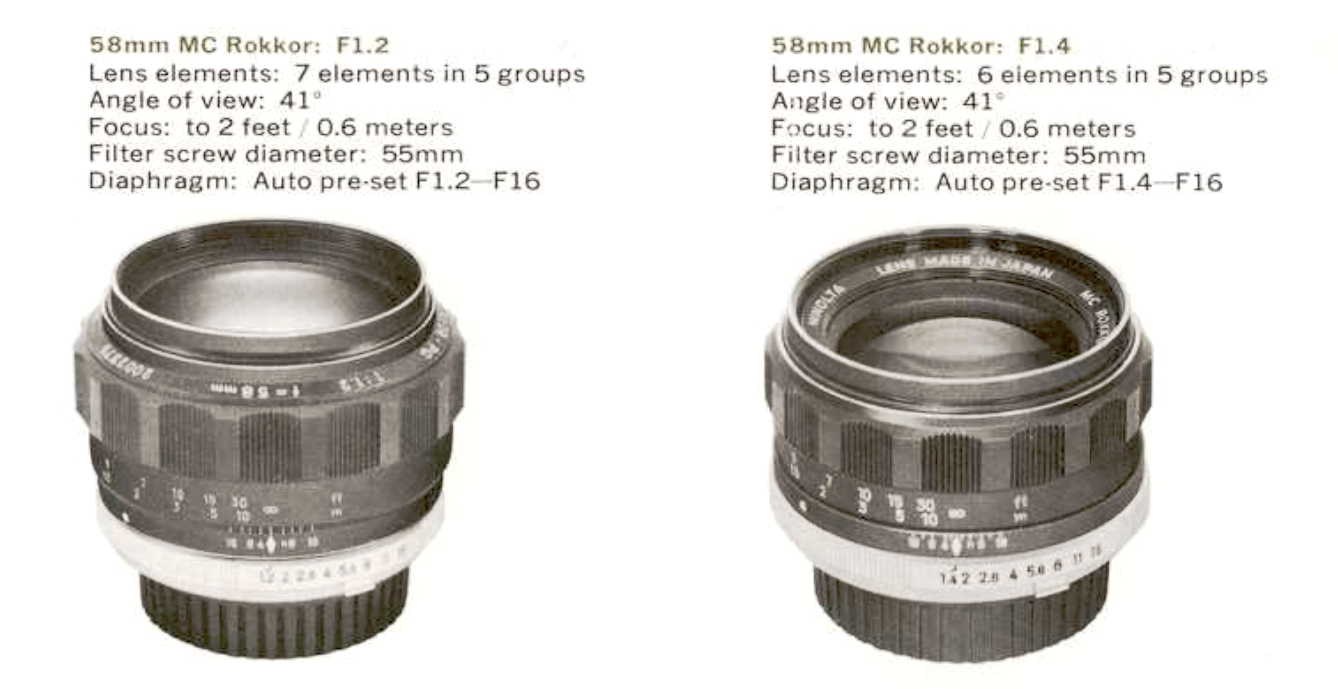
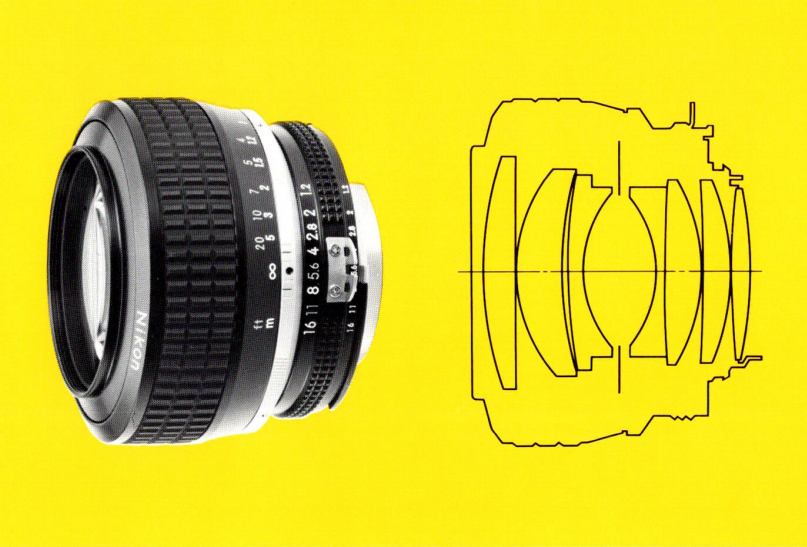
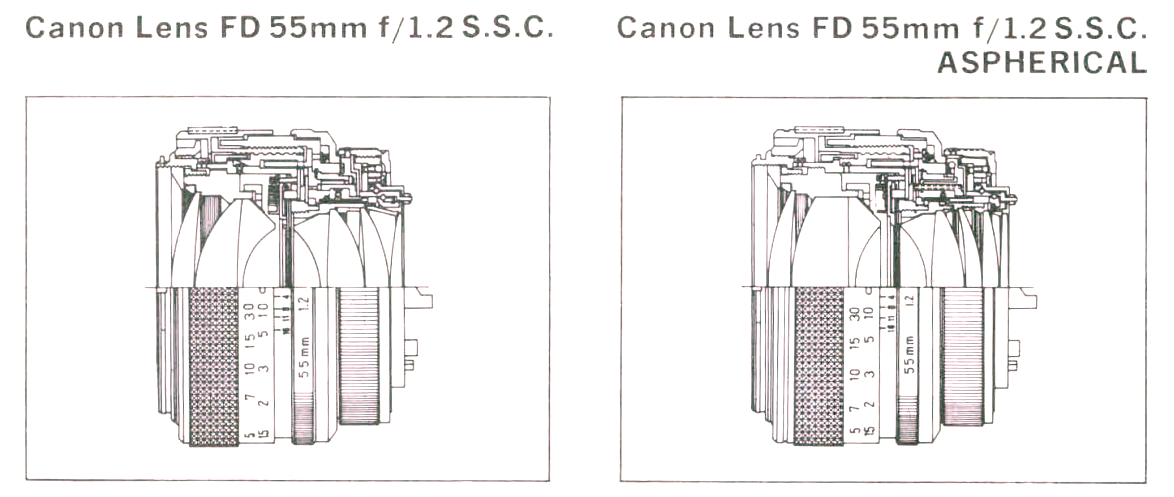
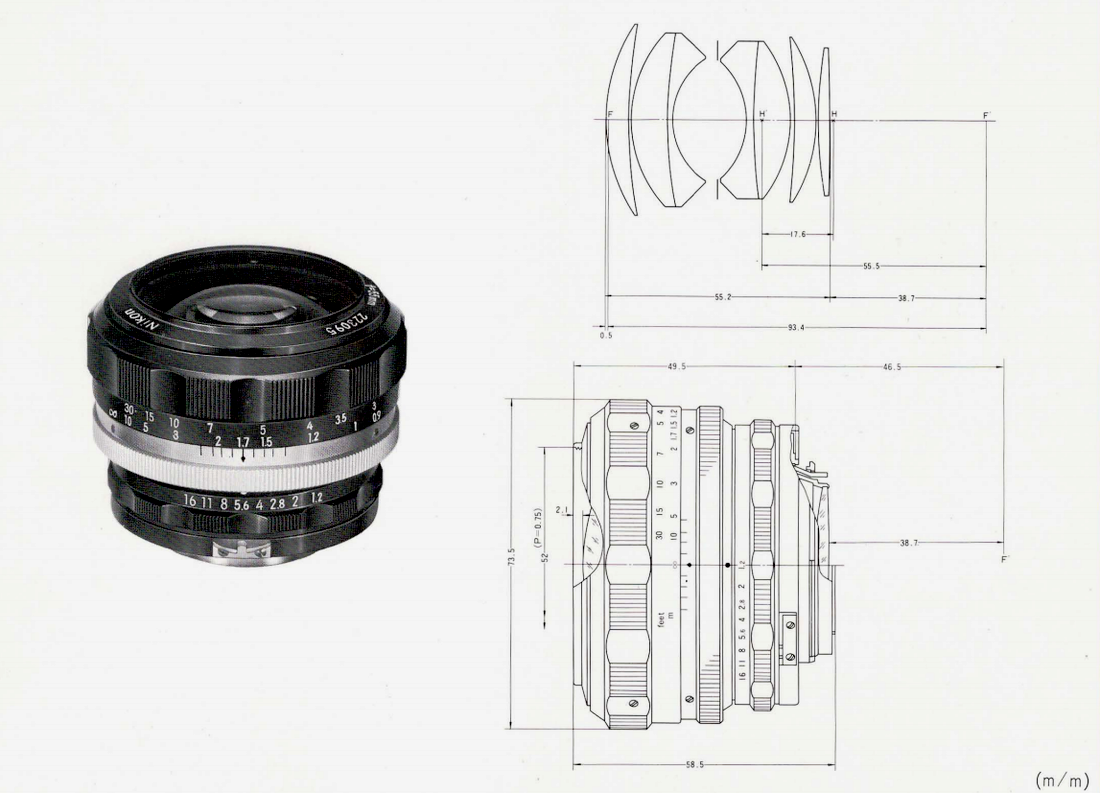

 RSS Feed
RSS Feed